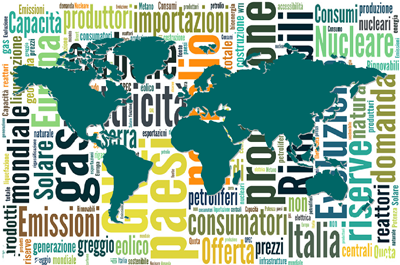Over the past few years, environmental and energy issues have gained greater prominence in the public debate in Spain. This is not surprising, given that the country is probable one of the most exposed in Europe to climate change and its impact on human health, water availability and the quality of life in general. In addition, the gas crisis which erupted in the aftermath of the Ukraine war has given rise to heated debates on the regulation of electricity markets and, more fundamentally, on the role of renewable sources of energy for both greater supply security and enhanced environment sustainability.
In light of this, all the main Spanish political parties –extreme right, conservative, social democrat and left-- have reflected these issues as part of their programmes for the upcoming European Parliament elections. The proposed solutions, however, vary significantly with respect to the Green Deal, the specific policy instruments to achieve the targets and the functioning of energy markets.
Overall objectives
There are indeed prominent differences regarding the overarching goals of the Green Deal, with the extreme right considering that such a strategy is detrimental to both national sovereignty and the competitiveness of key sectors, notably agriculture and energy-intensive industry. This party is against any measures which allegedly affect people’s incomes. And it favours the expansion of nuclear plants and energy sources which are as cheap as possible, which includes the prospection of new, and yet unknown, oil fields in Spain.
The other main parties have integrated the Green Deal in their programmes, though following different approaches. Thus, conservatives look for ways to combine decarbonization with the maintenance of competitiveness, thereby implicitly recognising the potential trade-offs between the different objectives. They allude to the need for adapting the Green Deal, and refer to a wide concept of renewable energy, which includes nuclear generation and bio-fuels --this being an area where green and economic objectives would be met at the same time.
Social democrats, for their part, take fully into account the Green Deal in their programme, even looking further beyond. For instance, they propose a strategy for adapting to climate change, and not just mitigating it. This includes, inter alia, new regulations to adapt urban infrastructure, housing, irrigation technology and water use. They also champion an extension of the EU budget for the purposes of environment restoration.
The two main national left parties intend to go beyond the Green Deal, preferring to reconsider the economic growth model that prevails in Europe and urging more stringent CO2 reduction targets than presently envisaged. They also advocate moving towards greater conditionality of EU support on meeting decarbonization objectives. The progressive closing of nuclear plants is also included in their programmes.
Policy instruments
The respective roles of green taxes, subsidies and regulations also give rise to a diversity of views. In line with its rejection of the Green Deal, the extreme right opts for a combination of lighter taxation and higher subsidies to the most affected sectors. They insist on the negative impacts of “EU bureaucracy”, preferring a reconsideration of the normative apparatus which allegedly raises costs, inhibits growth and hinders national sovereignty.
The conservative party emphasises a mix of fiscal incentives and subsidies in order to meet environmental goals. It has expressed in favour of a polluter-pay system, notably in the primary sector. Also, it intends to promote the use of electric vehicles all over Europe, including through the development of the charging grid, but at the same time it proposes a postponement of the elimination of combustion cars until the infrastructure is in place.
The socialist party emphasises the role of green taxes, including the increase in taxes on carbon-intensive activities. It also devotes attention to the green taxonomy and green bonds to help boost investment in environmentally-friendly areas. At the same time, the proposals take into account competitiveness concerns, thus supporting border taxes at the frontiers of the EU and greater efforts to fight unfair competition to reduce environmental dumping.
As to left parties, they propose heavier taxes on fossil energy use as well as a specific 15% surcharge on oil conglomerates, with a view to both speed up the green/fair transition and collect revenues necessary to compensate vulnerable groups. They also advocate a greater recourse to green conditionality on the provision of subsidies. Nuclear energy would have to be dropped from the green taxonomy altogether.
Electricity markets
Finally, there is a certain consensus that the electricity grid ought to be expanded and electricity connections with the rest of Europe strengthened. Policy instruments, however, differ.
The extreme right considers that electricity prices should reflect average (not marginal) production costs, which in turn should be reduced through the use of traditional forms of energy. Conservatives emphasise clean energy at affordable prices, not to lose competitiveness, while also calling for severing the links with Russian gas. Social democrats call for a reform of electricity markets in order to promote the development of renewal energy while ensuring stable prices. Left parties, in turn, reject the current marginal price determination mechanism and warn against the social costs of oligopolistic markets.
In conclusion, the range of issues considered by all the main parties in their programmes highlights the importance of environmental and energy concerns among the Spanish population. The policy proposals, however, reveal some significant differences which deserve deeper discussion both now and after the electoral process.




















